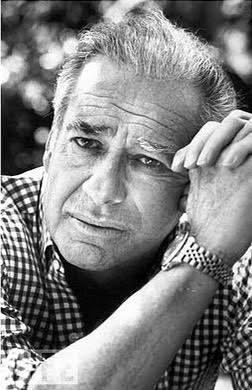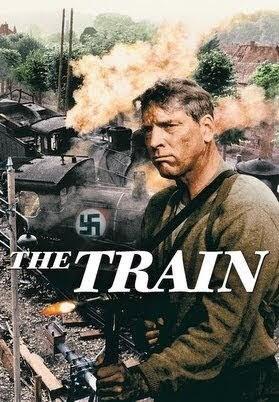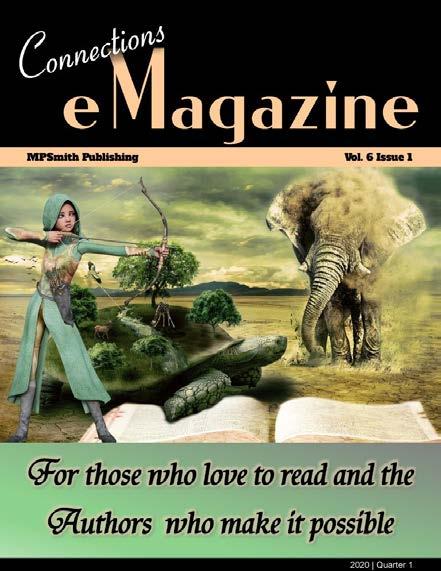
10 minute read
Another Dream by Stan Phillips
Another Dream

Advertisement

by Stan Phillips
Do you recall those dawdling days of early long summer holidays that stretched out as if they would never end?
Sunbaked and lazy they walked hand in hand with us along the seashores of early August. I do.

I remember them. And, if I listen very carefully, I can hear the echo of those days, faint, like the soft tintinabulations of the creation of time itself. Soft breezes that shift the the ripening corn of the child stepping gingerly into life.

All of my springtimes trembling on the brink in those long and indolent days, with nothing to do but watch those hours move slowly into lost yesterdays.
Do you recall yours? Those dream flowering holidays of butterflies and bumblebees and candyfloss that swashbuckled off into the fabric of history? Do you? 'Cos I think I remember mine. Or just maybe, as I sit with early autumn stepping over the threshold of my world, might it all be just another dream?

Stan Phillips 2020 ©
Stan Phillips is an 80 year old poet, musical podcast maker, part-time wannabe male model, and occasional stand up comedian. “I used to be a psychotherapist/counsellor when I had an honest job. I was born into prewar London, and attended 17 schools (my father believed they couldn’t hit a moving target) and I eventually finished up here in Ireland. Still wonder

ing what I will be when I grow up — but enjoying writing my quirky poetry as I do so.”
Discover more about Stan on Mom’s Favorite Reads website: https://moms-favorite-reads.com/moms-authors/stan-phillips
Classic Movies: The Train


by Hannah Howe
The Train, a 1964 Second World War movie, is based on an interesting premise: are great works of art more valuable than human life?
Directed by John Frankenheimer and starring Burt Lancaster, The Train is an ‘industrial’ movie in that sweat and coal dust are never far from the actors’ faces. It’s also a stirring action movie with a number of dramatic, explosive scenes.

It’s August 1944 and with the Allies closing in on Paris, the Nazis decided to transport, by train, the great art treasures of France to Germany. In the movie, the main protagonists are Paul Labiche, a railwayman and Resistance member, played by Burt Lancaster, and art lover Colonel Franz von Waldheim, played by Paul Scofield.
Given that the Allies are approaching, the Resistance only need to delay the train by a few days, while protecting its priceless cargo. Although initially reluctant to participate in the plan, Labiche devises an elaborate plan where, instead of travelling in a straight line to Germany, the train travels in a circle. In all aspects, the movie is gritty and realistic. However, this concept does require a suspension of disbelief because the Nazis never suspect that the train is taking a circuitous route. One of the most dramatic scenes in the movie is a train crash. This was filmed for real. However, the stuntman pulled the throttle back too far and the train travelled too fast, demolishing


a dozen cameras en route. This left just one camera, buried in the ground, to capture the action, which it did to stunning effect, the wrecked train coming to rest above its allseeing lens. Due to a number of complex sequences, the movie overran it’s production schedule. Many of the French character actors in the film were committed to other projects. Therefore, director John Frankenheimer came up with a simple solution. As Resistance fighters, they were placed against a wall and shot by the Nazis. Historically correct, this explained their absence from the closing scenes of the film. An agile performer, Burt Lancaster performed his own stunts. These included jumping on to a fast moving train and, later, being pushed off a fast moving train. He escaped without injury.
However, on a rest day he played golf and badly damaged his knee. John Frankenheimer needed a reason to explain Lancaster’s limp, so he included a new scene in which the Nazis shoot Lancaster in the knee as he makes his escape thus allowing the production to continue without further delay.

With filming complete, John Frankenheimer showed The Train to the production company, United Artists. They realised that the movie required another action scene. Therefore, Frankenheimer reassembled the cast for a dramatic Spitfire attack scene, a highlight of the movie. At Lancaster’s suggestion, Frankenheimer also added a philosophical/romantic scene, which Lancaster largely wrote. This scene featured Lancaster and Jeanne Moreau, and is another highlight of the movie. Throughout the film, John Frankenheimer juxtaposed the value of art with the value of human life. A brief montage at the close of the movie intercuts the crates full of paintings with the bloodied bodies of the hostages, shot by the Nazis, before a final scene shows Lancaster as Labiche limping away.

Credits:
John Frankenheimer Burt Lancaster Paul Scofield and Burt Lancaster Jeanne Moreau
Hannah Howe is the author of the Sam Smith Mystery Series, the Ann's War Mystery Series and the #1 international bestseller Saving Grace. Hannah's books are published by Goylake Publishing and distributed through Gardners Books to over 300 outlets worldwide. Her books are available in print, as eBooks and audiobooks, and are being translated into ten languages. Discover

more on Mom's Favorite Reads website:
https://moms-favorite-reads.com/moms-authors/hannah-howe
Word Search—October




By Mom’s Favorite Reads
You can find the answers for this activity on the Mom’s Favorite Reads website here:


https://moms-favorite-reads.com/magazines/activities/
Brought to you by...

The August issue of Connections eMagazine is dedicated to the winners of our annual Reader’s Choice Awards. We had some amazing books from some talented authors. I hope you will take a minute to check them out.

Marketing seems to be one of those areas that every author struggles with. It’s the same struggle companies world-wide have been dealing with for decades. How do I get my product in front of my target audience? Connections eMagazine can help. The publication is free to readers, bloggers and to authors looking for a little extra exposure. Visit our website for details.

https://melaniepsmith.com/

https://melaniepsmith.com/emagazine/
Connections eMagazine is a FREE quarterly publication founded by authors Melanie P. Smith and Rhoda D’Ettore. It is currently produced entirely by Editor, Melanie P. Smith. Over the years, the magazine has evolved and it now features promos, freebies, blog articles, and short stories in every issue. Discover more about Connections eMagazine on their website here:
https://melaniepsmith.com/emagazine-landing/
Iced Age




by John Greeves
When you come on Friday, bring me a card stuffed with lions and wildebeests. My wife will be here, pouring green leaf tea. We shall all pretend.
I will inquire delicately about the passing years, your Neolithic husband, the young cubs, now hairy mammoths, if the cave prints are to be believed. We will sit eating dainty sandwiches and lemon drizzle cake with voices that pebble skim seas; sipping tea and causing only minor ripples to arise.
You and I, will play at Renaissance man, never revealing the plunging depths, we felt during the last ice-age, when fireside bodies merged, skin upon skin.
John Greeves originally hails from Lincolnshire. He believes in the power of poetry and writing to change people’s lives and the need for language to move and connect people to the modern world. Since retiring from Cardiff University, Greeves works as a freelance journalist who's interested in an eclectic range of topics.

Wealth and Heaven


by Father Ian Maher
In the second half of Matthew chapter 19 (16- 30) is the story about a rich young man. We can discern that he is rich from an attitude that becomes apparent in the story. This man approaches Jesus sincerely wanting to know what he must do to inherit eternal life. Jesus replies by telling him, in essence, to follow the commandments. From the man’s response it appears that he has been doing this, and we have no reason to believe that he had been living anything other than a good, upright life. The conversation with Jesus continues a little longer and, as usual, Jesus puts his finger on exactly what was getting in the way of the young man’s spiritual progress: his wealth. Faced with the challenge from Jesus to sell his possessions and give the money to the poor, the man goes away grieving. It was too much to ask. His wealth, it would seem, mattered more than anything. Jesus then goes on to tell his disciples who were no doubt witnessing this exchange with amazement –after all, wealth was generally seen as a sign of God’s blessing –how hard it would be for a rich person to enter the kingdom of heaven. Jesus even uses an amusing exaggeration to illustrate this point, saying: ‘Again I tell you, it is easier for a camel to go through the eye of a needle than for someone who is rich to enter the kingdom of God,’ Now what we can discern from the gospels and the rest of the New Testament is that Jesus was not condemning wealth and possessions in themselves. Rather, his stark instruction to the rich young man was to confront him with the fact that his focus on keeping the commandments was preventing him from seeing how his possessions were, in fact, the most important thing in his life.


This is why he left Jesus in grief. He knew, perhaps for the first time, that his attachment to those things was too strong. They held the place that really belonged to God. I like to think what Jesus said to him eventually took root. Who knows, maybe the rich young man became a great philanthropist. As ever, the gospel stories find echoes in our own lives. This particular story challenges all of us to reflect on the place that possessions occupy in our own life. It is not relevant only to those who might be deemed ‘rich’. Any of us can make the mistake of the rich young man by investing too much in the things we acquire and accumulate, and not enough in our relationships and responsibilities towards our fellow human beings. Remember, it’s not wrong to have things. Jesus is not saying that. But we do need to be careful so that they do not end up displacing the most important things in life: love and service to God and our fellow human beings. Perhaps the penny eventually dropped for the rich young man. I certainly hope so. Even more do I hope that it has dropped for myself –and for you.
I am a priest and minor canon at Sheffield Cathedral. My last post prior to retirement from stipendiary ministry was as the Multifaith Chaplaincy Co-ordinator and Anglican Chaplain at Sheffield Hallam University, where I worked for 12 years.

https://imaherblog.wordpress.com/ Twitter @IanMaher7










